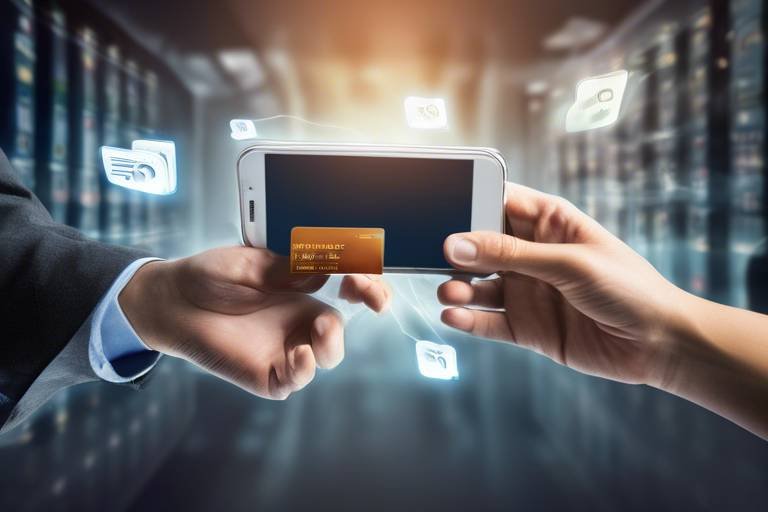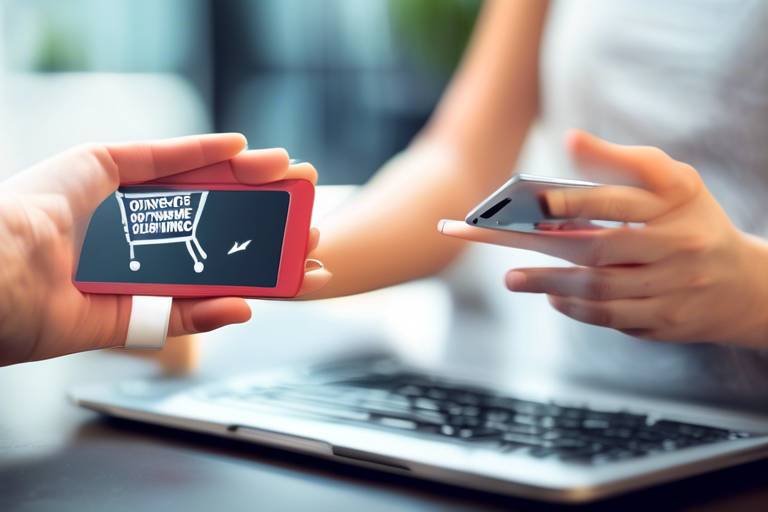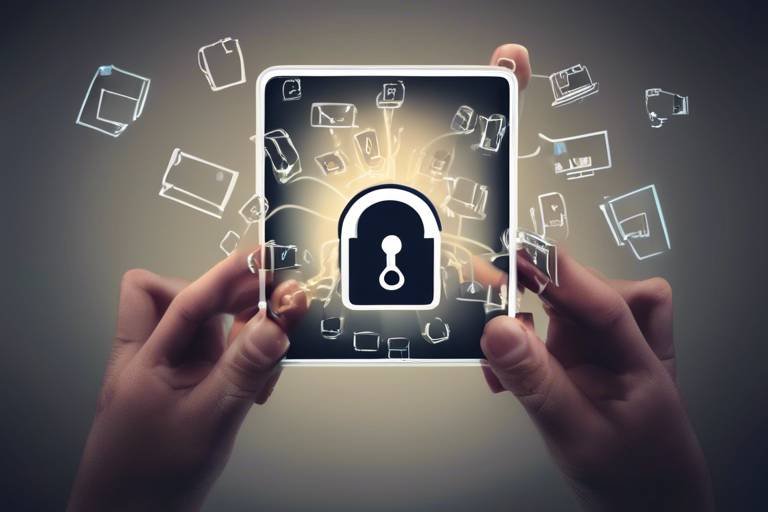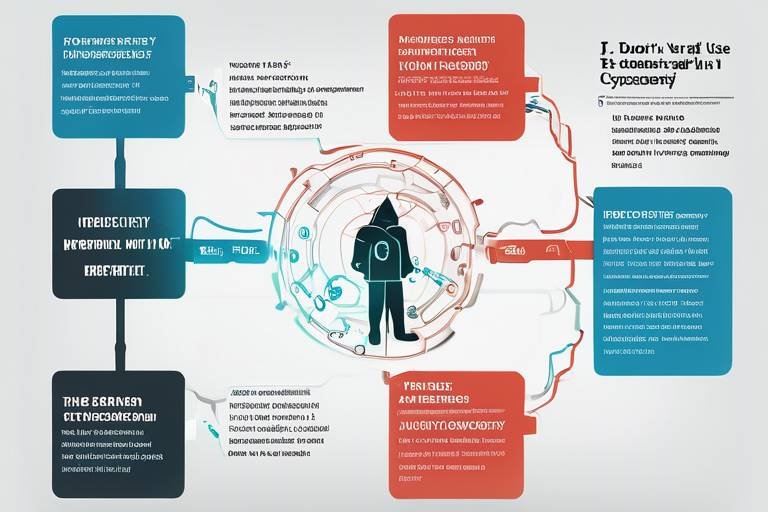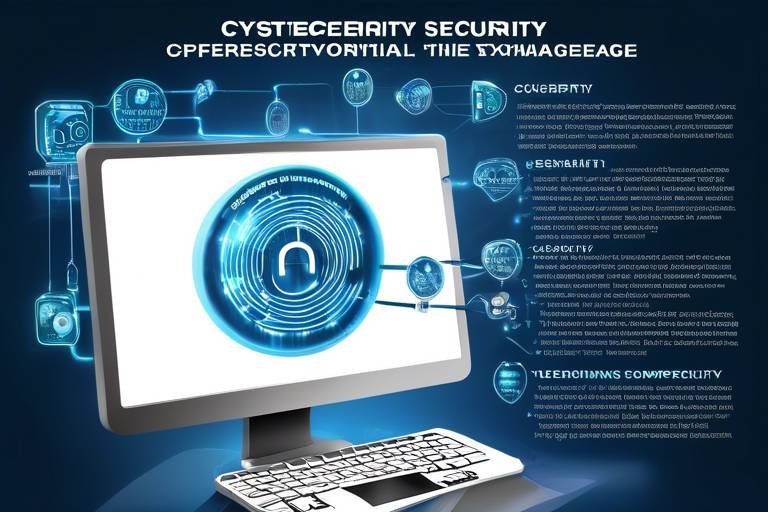Mobile Banking - Balancing Convenience and Cybersecurity
In today's fast-paced world, mobile banking has emerged as a game-changer, revolutionizing the way we handle our finances. Imagine having the power to manage your money right from the palm of your hand—sounds convenient, right? However, with great convenience comes great responsibility, especially when it comes to cybersecurity. This article dives deep into the dual nature of mobile banking, shedding light on its remarkable benefits while also addressing the critical security measures that users must adopt to protect their sensitive financial information.
Mobile banking has transformed the way consumers manage their finances, offering unprecedented accessibility and convenience. Over the last decade, we’ve witnessed a meteoric rise in mobile banking adoption, fueled by the proliferation of smartphones and the internet. According to recent statistics, over 70% of adults in developed countries now use mobile banking apps, a trend that continues to grow as technology evolves. Factors contributing to this surge include:
- Increased smartphone penetration: With more people owning smartphones, accessing banking services has never been easier.
- Enhanced internet connectivity: The expansion of 4G and 5G networks means users can bank on-the-go without interruptions.
- Consumer demand for convenience: People are seeking faster, more efficient ways to manage their finances, and mobile banking delivers just that.
So, why is mobile banking becoming the go-to choice for millions? The advantages are numerous and compelling, making it an attractive option for users. First off, mobile banking offers 24/7 access to your accounts, allowing you to check balances, transfer funds, and pay bills anytime, anywhere. Imagine being able to handle your finances while waiting in line at the grocery store or during your morning commute!
The design and functionality of mobile banking apps play a crucial role in user experience. A well-designed app can make banking feel less like a chore and more like a seamless part of your daily routine. Intuitive interfaces enhance usability, encouraging even the less tech-savvy individuals to embrace mobile banking solutions. Think of it as having a personal banker in your pocket—one that’s easy to navigate and understand!
Many mobile banking apps come equipped with built-in tools that help users budget and track their expenses. These features empower users to take control of their finances, making informed decisions based on real-time data. It’s like having a financial advisor right there on your phone, guiding you toward better spending habits and savings goals.
Real-time alerts for transactions and account changes are another standout feature of mobile banking. These notifications keep users informed about their financial activities, enhancing security and promoting proactive financial management. Imagine receiving an instant alert if a suspicious transaction occurs—this level of awareness can be a game-changer in preventing fraud.
Despite its many advantages, mobile banking also presents challenges, particularly concerning security. As users increasingly rely on their smartphones for financial transactions, they must remain vigilant about potential risks. Cybercriminals are constantly evolving their tactics, making it crucial for users to stay informed and proactive in safeguarding their information.
Mobile banking is susceptible to various cybersecurity threats, including phishing attacks and malware. Understanding these threats is essential for users to protect their financial security. Common threats include:
- Phishing Attacks: Cybercriminals often impersonate legitimate entities to trick users into providing sensitive information.
- Malware: Malicious software can infiltrate devices, compromising personal and financial data.
Phishing remains a prevalent threat in mobile banking, where attackers impersonate legitimate entities. These scams can come in the form of emails, texts, or even phone calls, luring users into revealing sensitive information. Recognizing these scams is crucial; users should always verify the source before clicking on links or providing any personal data.
Data encryption is vital for protecting sensitive information in mobile banking. By scrambling data into an unreadable format, encryption ensures that even if hackers intercept information, they cannot decipher it. This layer of security is essential for maintaining the integrity of financial transactions, giving users peace of mind as they conduct their banking activities.
To mitigate risks, users should adopt best practices for secure mobile banking. Here are some practical tips to enhance security while enjoying the convenience of mobile banking services:
- Always use strong, unique passwords for your banking apps.
- Enable two-factor authentication whenever possible.
- Keep your mobile device's operating system and apps updated.
- Be cautious with public Wi-Fi—avoid accessing banking apps on unsecured networks.
Q: Is mobile banking safe?
A: While mobile banking is generally safe, users must take precautions, such as using strong passwords and enabling two-factor authentication.
Q: Can I access my mobile banking app on multiple devices?
A: Yes, most mobile banking apps allow access from multiple devices, but it's essential to keep your login credentials secure.
Q: What should I do if I suspect fraudulent activity on my account?
A: Immediately contact your bank to report the issue and take steps to secure your account.

The Rise of Mobile Banking
Mobile banking has truly revolutionized the way we handle our finances, bringing the bank right into our pockets. Imagine being able to transfer money, pay bills, or check your balance without stepping foot outside your home. This level of convenience has led to a surge in mobile banking adoption, with more and more consumers opting for the ease of managing their finances through their smartphones. But what exactly has fueled this rapid growth?
One of the primary factors contributing to the rise of mobile banking is the increasing penetration of smartphones. With billions of people around the globe now owning a smartphone, the accessibility of banking services has never been easier. According to recent statistics, over 80% of adults in developed countries use smartphones, and many of these users are leveraging their devices for mobile banking.
Moreover, the advent of high-speed internet and widespread Wi-Fi availability has played a pivotal role in enhancing mobile banking services. Consumers can now perform transactions seamlessly, whether they are at home, at work, or on the go. The 24/7 availability of banking services has transformed consumer expectations, making traditional banking hours feel outdated and inconvenient.
Additionally, the COVID-19 pandemic has accelerated the shift towards mobile banking. As people sought to minimize physical contact, many turned to digital solutions for their banking needs. This shift not only highlighted the convenience of mobile banking but also underscored its importance in maintaining financial activity during challenging times.
Furthermore, financial institutions have recognized the demand for mobile banking and have invested heavily in developing user-friendly apps. These applications are designed with the user experience in mind, ensuring that even those who are not tech-savvy can navigate their finances with ease. Features such as biometric authentication and personalized dashboards have made mobile banking not just convenient, but also secure.
In summary, the rise of mobile banking can be attributed to a combination of technological advancements, changing consumer expectations, and a global shift towards digital solutions. As we continue to embrace this new era of banking, it’s essential to understand both the benefits and the potential challenges that come with it. The next sections will delve deeper into the advantages of mobile banking while also addressing the critical aspect of cybersecurity.

Benefits of Mobile Banking
Mobile banking has revolutionized the way we handle our finances, making it easier than ever to manage money on the go. Imagine being able to check your bank balance, transfer funds, or pay bills—all from the palm of your hand. This level of accessibility is one of the key benefits that has attracted millions of users worldwide. With just a few taps on your smartphone, you can access your financial information anytime, anywhere, which is a game-changer in today's fast-paced world.
One of the standout features of mobile banking is the 24/7 access it provides. Unlike traditional banking hours, which can be restrictive, mobile banking allows you to conduct transactions at any hour of the day or night. Whether you're an early riser or a night owl, your bank is always open. This convenience means you can manage your finances without having to rearrange your schedule or wait in long lines.
Furthermore, mobile banking offers instant transactions, which is a significant advantage for those who need to move money quickly. Gone are the days of waiting for checks to clear or for funds to transfer between accounts. With mobile banking, you can send money to friends, pay bills, or make purchases in real-time. This immediacy not only saves time but also helps users avoid late fees and missed payments.
In addition to these conveniences, many mobile banking apps come equipped with financial management tools that empower users to take control of their finances. For example, users can track their spending habits, set budgets, and receive insights into their financial health. These features are designed to help users make informed decisions about their money, ultimately leading to better financial outcomes. Imagine having a personal financial advisor right in your pocket!
The design and functionality of mobile banking apps play a crucial role in user experience. Most apps are designed with intuitive interfaces that make navigation a breeze. This is especially important for individuals who may not be tech-savvy. A well-designed app can encourage more people to adopt mobile banking solutions, as it reduces the learning curve and makes managing finances less daunting. With clean layouts and easy-to-understand icons, users can quickly find what they need without feeling overwhelmed.
Many mobile banking applications offer built-in tools for budgeting and tracking expenses. These features are incredibly valuable, as they enable users to monitor their spending patterns and identify areas where they can save money. For instance, users can categorize their expenses and set monthly limits, which can lead to more disciplined spending habits. By empowering users with these tools, mobile banking not only simplifies financial management but also fosters a sense of financial literacy.
Another significant benefit of mobile banking is the ability to receive real-time alerts for transactions and account changes. This feature is essential for enhancing security and promoting proactive financial management. Users can set up notifications for various activities, such as withdrawals, deposits, or suspicious transactions. Such alerts help users stay informed and allow them to act quickly if they notice any unauthorized activity. It’s like having a financial watchdog that keeps an eye on your accounts 24/7!
In summary, the benefits of mobile banking are extensive, making it an attractive option for users looking to manage their finances more effectively. From the convenience of 24/7 access to the empowerment provided by financial management tools, mobile banking has something for everyone. As we continue to embrace technology in our daily lives, it’s clear that mobile banking will remain a vital component of our financial ecosystem.
- What is mobile banking? Mobile banking allows users to access their bank accounts and conduct financial transactions using a smartphone or tablet.
- Is mobile banking safe? While mobile banking is generally safe, users should follow best practices to protect their financial information, such as using strong passwords and enabling two-factor authentication.
- Can I deposit checks using mobile banking? Yes, many mobile banking apps offer a feature that allows users to deposit checks by taking a photo of the check.
- What should I do if I suspect fraud on my mobile banking account? If you suspect fraud, immediately contact your bank's customer service and report the issue. It's crucial to act quickly to minimize potential losses.

User-Friendly Interfaces
When it comes to mobile banking, the user interface (UI) is everything. Imagine trying to navigate a complicated maze every time you want to check your balance or transfer money. Frustrating, right? A well-designed mobile banking app turns this maze into a smooth, straight path, making it easy for users to manage their finances with just a few taps on their screens. The simplicity and intuitiveness of these interfaces are crucial for attracting and retaining users.
One of the key features of user-friendly interfaces is their intuitive navigation. Users should be able to find what they need without having to think too much. For instance, a well-organized menu that categorizes services like transfers, payments, and account settings can significantly enhance the user experience. Additionally, using recognizable icons and consistent design elements helps users feel more comfortable and confident while using the app.
Moreover, many mobile banking applications incorporate personalization options that allow users to customize their experience. This can include changing themes, setting up shortcuts for frequently used features, or even rearranging the dashboard to prioritize what matters most to them. Such personalization not only makes the app more visually appealing but also improves usability by aligning with individual user preferences.
Another critical aspect of user-friendly interfaces is accessibility. Developers are now focusing on creating apps that cater to users of all backgrounds, including those with disabilities. Features like voice commands, screen readers, and adjustable text sizes ensure that everyone can navigate the app with ease. This inclusivity is not just a trend; it's a necessity in today's diverse world.
Additionally, mobile banking apps often utilize real-time feedback mechanisms. For example, when a user initiates a transaction, a quick confirmation message can reassure them that their action was successful. This immediate feedback loop minimizes confusion and enhances the overall user experience. Users also appreciate visual cues, such as progress bars during transactions, which help them understand how long they need to wait.
Lastly, the integration of security features into the user interface is vital. Users should feel safe when using mobile banking apps, and visible security measures—like biometric authentication options (fingerprint or facial recognition)—can boost their confidence. When users see these features prominently displayed, it reinforces the idea that their financial information is protected, making them more likely to engage with the app regularly.
In conclusion, a user-friendly interface is not just a luxury in mobile banking; it's a fundamental requirement. By prioritizing intuitive navigation, personalization, accessibility, real-time feedback, and security, developers can create mobile banking experiences that are not only convenient but also enjoyable. As more people turn to mobile banking, the importance of these user-friendly features will only continue to grow.

Personal Finance Management
In today's fast-paced world, managing personal finances can feel like juggling flaming swords. With so many expenses, savings goals, and unexpected bills, it’s easy to let financial management slip through the cracks. However, mobile banking apps have stepped in to be the safety net we all need. These apps often come equipped with a plethora of tools designed specifically for budgeting, tracking expenses, and even setting savings goals. Imagine having a financial advisor right in your pocket, ready to guide you at a moment's notice!
One of the standout features of many mobile banking applications is their budgeting tools. These tools allow users to categorize their spending, helping them to visualize where their money is going each month. For instance, you can allocate specific amounts for categories like groceries, entertainment, and transportation. By doing this, users can quickly identify areas where they might be overspending. It’s like having a financial roadmap that leads you to your goals without the risk of getting lost!
Moreover, these apps often provide spending insights that analyze your financial habits over time. They can generate reports that show trends in your spending, allowing you to make informed decisions. For example, if you notice that your dining out expenses have skyrocketed, you might decide to cook more at home. This kind of insight is invaluable, as it empowers users to take control of their financial destiny.
Additionally, many mobile banking platforms offer features that enable users to set financial goals. Whether it’s saving for a vacation, a new car, or an emergency fund, these apps can help you set targets and track your progress. You can set up automatic transfers to a savings account, making it easier to reach those goals without even thinking about it. This is akin to planting a seed and watching it grow; with time and care, your savings can flourish!
Furthermore, the integration of real-time notifications plays a crucial role in personal finance management. Users receive alerts for transactions, reminding them of their spending habits and keeping them accountable. For instance, if you spend more than your budgeted amount in a particular category, you’ll get a notification that prompts you to reconsider your spending. It’s like having a personal coach who nudges you to stay on track!
In summary, the personal finance management tools available in mobile banking apps are not just gimmicks; they are essential resources that help users take control of their financial lives. By leveraging these features, individuals can better manage their budgets, make informed spending decisions, and ultimately achieve their financial goals. So, if you haven’t already, it’s time to explore what your mobile banking app can do for you!
- What are the key features of mobile banking apps for personal finance management?
Mobile banking apps typically offer budgeting tools, spending insights, goal setting, and real-time notifications to help users manage their finances effectively.
- How can I ensure my financial data is secure while using mobile banking?
Always use strong passwords, enable two-factor authentication, and ensure that your app is updated regularly to protect your financial data.
- Can I link multiple accounts to my mobile banking app?
Yes, most mobile banking apps allow users to link multiple bank accounts, credit cards, and investment accounts for comprehensive financial management.

Instant Notifications
In today's fast-paced world, staying updated on your finances is more crucial than ever. That's where come into play. Imagine having a personal assistant that alerts you the moment a transaction occurs, or when your account balance dips below a certain level. This feature not only keeps you informed but also adds a layer of security to your mobile banking experience. With instant notifications, users can quickly detect unauthorized transactions and take immediate action, which is essential in minimizing potential losses.
These real-time alerts can cover various aspects of your banking activities, including:
- Transaction confirmations
- Balance updates
- Suspicious activity alerts
- Payment reminders
By receiving these notifications, you can manage your finances proactively rather than reactively. For example, if you receive an alert about a large withdrawal that you didn't authorize, you can instantly contact your bank to freeze your account and investigate the matter. This swift response can be the difference between recovering your funds or losing them forever.
Moreover, instant notifications can also help in budgeting and financial planning. When you know exactly how much you're spending in real-time, it becomes easier to stick to your budget. Some apps even allow you to customize your alerts based on your spending habits, so you can receive notifications tailored to your financial goals. This level of personalization not only enhances your banking experience but also empowers you to take control of your financial future.
In summary, are not just a convenient feature; they are an essential tool for anyone using mobile banking. They provide peace of mind, enhance security, and promote better financial management, making them a must-have for all users. As you navigate the world of mobile banking, embracing this feature can significantly improve your overall experience and safeguard your financial well-being.

Challenges of Mobile Banking
While mobile banking has revolutionized the way we manage our finances, it is not without its challenges. One of the most significant issues is security. As more users turn to their smartphones for banking, the potential for cyber attacks increases. Cybercriminals are constantly devising new methods to exploit vulnerabilities in mobile banking apps and networks. This means that users must be aware of the risks and take proactive measures to protect their financial information.
Another challenge is the digital divide. Not everyone has equal access to technology or the internet, which can create disparities in who can benefit from mobile banking services. This can be particularly pronounced in rural areas or among older populations who may not be as tech-savvy. As a result, some individuals may feel left out of the financial ecosystem, unable to enjoy the convenience that mobile banking offers.
Moreover, mobile banking apps can sometimes suffer from technical glitches. Imagine trying to make a crucial transaction, only to find that the app is down or running slowly. Such issues can lead to frustration and even financial loss. Users may miss important payments or deadlines due to these technical hiccups, which can impact their credit scores or lead to late fees.
Additionally, the reliance on mobile devices poses a unique risk. If a user loses their phone or it gets stolen, sensitive financial information can fall into the wrong hands. It’s essential for users to implement security measures such as strong passwords, biometric authentication, and remote data wiping to mitigate this risk.
To summarize, the challenges of mobile banking are multifaceted, ranging from security threats to accessibility issues. As users embrace this innovative way of managing their finances, they must remain vigilant and informed to navigate the potential pitfalls effectively. Here’s a quick overview of the main challenges:
- Security Risks: Increased vulnerability to cyber attacks.
- Digital Divide: Unequal access to technology among different demographics.
- Technical Glitches: Issues with app functionality that can disrupt transactions.
- Device Security: Risks associated with lost or stolen devices.
By understanding these challenges, users can better prepare themselves to enjoy the convenience of mobile banking while safeguarding their financial health.
1. What are the main security risks associated with mobile banking?
Mobile banking can expose users to risks such as phishing attacks, malware, and data breaches. It's essential to use secure connections and maintain updated software to mitigate these threats.
2. How can I protect my mobile banking information?
To protect your information, use strong passwords, enable two-factor authentication, and avoid using public Wi-Fi for banking transactions. Additionally, regularly monitor your accounts for any unauthorized activity.
3. What should I do if my phone is lost or stolen?
If your phone is lost or stolen, immediately contact your bank to report the issue and consider changing your passwords. You can also use remote wipe features to delete sensitive data from your device.
4. Are there alternatives to mobile banking?
Yes, alternatives include online banking through a computer, traditional banking methods, and financial management apps that do not require direct access to your bank account.
5. Can mobile banking apps be trusted?
Most reputable banks provide secure mobile banking apps that utilize encryption and other security measures. Always download apps from official sources and keep them updated.

Cybersecurity Threats
In the world of mobile banking, the convenience of managing your finances on the go comes with its fair share of risks. As we embrace the ease of mobile banking, we must also be vigilant about the that lurk in the digital shadows. The landscape of mobile banking is continually evolving, and so are the tactics employed by cybercriminals. Understanding these threats is crucial for safeguarding your financial information and ensuring a secure banking experience.
One of the most common threats in mobile banking is phishing attacks. These scams often involve attackers masquerading as legitimate entities, like your bank or a trusted service provider, to trick you into revealing sensitive information, such as passwords or account numbers. Phishing can occur through various channels, including emails, text messages, or even phone calls. It's important to remain skeptical of unsolicited communications that request personal information. Always verify the source before clicking on links or providing any details.
Another significant risk is malware, which can infect your mobile device and compromise your banking information. Malware can be hidden in seemingly harmless apps or downloaded from untrustworthy websites. Once installed, it can capture keystrokes, intercept messages, or even take control of your device. To combat this threat, always download apps from reputable sources, and keep your device's operating system and applications up to date. Regular updates often include security patches that protect against the latest vulnerabilities.
Additionally, the use of unsecured Wi-Fi networks poses a considerable risk when accessing mobile banking services. Public Wi-Fi networks, such as those found in cafes or airports, can be breeding grounds for cybercriminals looking to intercept your data. When using mobile banking, it's best to avoid these networks or use a VPN (Virtual Private Network) to encrypt your connection, adding an extra layer of security.
To give you a clearer picture of the types of threats that exist, consider the following table:
| Threat Type | Description | Prevention Tips |
|---|---|---|
| Phishing | Fraudulent attempts to obtain sensitive information by impersonating legitimate entities. | Verify the source, avoid clicking on suspicious links, and never share personal information. |
| Malware | Malicious software designed to infiltrate and damage your device, stealing sensitive data. | Download from trusted sources, keep software updated, and use antivirus protection. |
| Unsecured Wi-Fi | Public networks that can be easily accessed by hackers to intercept your data. | Avoid using public Wi-Fi for banking, or use a VPN for secure connections. |
In summary, while mobile banking offers incredible convenience, it also opens the door to various cybersecurity threats that can jeopardize your financial security. By staying informed about these risks and implementing best practices, you can enjoy the benefits of mobile banking without compromising your safety.
Q1: What is phishing in mobile banking?
A1: Phishing is a type of cyber attack where scammers impersonate legitimate organizations to trick users into providing sensitive information, such as passwords or credit card numbers.
Q2: How can I protect my mobile banking app from malware?
A2: Protect your app by downloading it only from official app stores, keeping your device updated, and using reputable antivirus software.
Q3: Is using public Wi-Fi safe for mobile banking?
A3: Using public Wi-Fi for mobile banking is risky. It’s best to avoid it or use a VPN to secure your connection.

Phishing Attacks
In the digital age, are one of the most cunning threats that mobile banking users face. These deceptive schemes often masquerade as legitimate communications from banks or financial institutions, luring unsuspecting victims into revealing sensitive information like passwords and account numbers. Imagine receiving a text message that looks just like it came from your bank, urging you to click on a link to verify your account. It’s alarming how easily one can fall into this trap, especially when the messages are crafted to appear authentic.
Phishing attacks can take various forms, including emails, SMS messages, and even phone calls. The attackers employ social engineering tactics to create a sense of urgency, making you feel like you need to act quickly. For instance, they might claim that your account has been compromised and that immediate action is required. This pressure can cloud judgment, leading to hasty decisions. To help you recognize these threats, here are some common signs of phishing attempts:
- Generic Greetings: Phishing messages often use generic salutations like "Dear Customer" instead of your name.
- Suspicious Links: Hover over links to see the actual URL before clicking. If it looks strange or doesn’t match the official website, don’t click it.
- Urgent Language: If the message creates a sense of urgency, be cautious. Legitimate institutions usually don’t pressure you.
- Spelling and Grammar Errors: Many phishing attempts contain typos and awkward phrasing, which can be a red flag.
To protect yourself from these malicious attacks, it’s essential to remain vigilant. Always verify the source of any communication before providing personal information. If you receive a suspicious message, contact your bank directly using official contact information instead of responding to the message or clicking any links. Additionally, enabling two-factor authentication on your mobile banking app can serve as an extra layer of protection, ensuring that even if your credentials are compromised, unauthorized access is still prevented.
In conclusion, while mobile banking offers incredible convenience, it also opens the door to potential threats like phishing attacks. By staying informed and adopting proactive measures, you can safeguard your financial information and enjoy the benefits of mobile banking without fear.
Q: What should I do if I think I've been targeted by a phishing attack?
A: If you suspect a phishing attempt, do not click on any links or provide any personal information. Report the incident to your bank and consider changing your passwords.
Q: How can I identify a legitimate email from my bank?
A: Look for personalized greetings, official logos, and correct spelling. Always verify the sender's email address and compare it with previous legitimate communications.
Q: Is two-factor authentication really necessary?
A: Absolutely! Two-factor authentication adds an extra layer of security, making it much harder for attackers to gain access to your account even if they have your password.

Data Encryption
In the realm of mobile banking, serves as a formidable shield against the ever-evolving landscape of cyber threats. But what exactly does this mean for you as a user? Simply put, data encryption is the process of converting your sensitive information into a coded format that is unreadable to anyone who doesn't possess the correct decryption key. Imagine it as locking your valuables in a safe; even if someone breaks into your house, they can't access what's inside without the combination. This is crucial in mobile banking, where your financial details, such as account numbers and personal identification, are constantly at risk.
Encryption works by using algorithms to scramble your data, making it nearly impossible for hackers to decipher it. The most commonly used encryption standards in mobile banking include AES (Advanced Encryption Standard) and RSA (Rivest-Shamir-Adleman). These methods ensure that your transactions are secure, whether you're transferring funds, checking your balance, or updating your personal information. The beauty of encryption lies in its dual functionality: it not only protects your data in transit but also secures it at rest, meaning even when your information is stored on a server, it remains encrypted and safe from prying eyes.
However, it's essential to understand that while encryption is a powerful tool, it is not a silver bullet. Users must remain vigilant and adopt additional security measures to safeguard their financial information. Here are some key points to consider:
- Always use apps that employ robust encryption standards. Check the app's security features before downloading.
- Keep your software updated. Regular updates often include security patches that enhance encryption protocols.
- Be cautious with public Wi-Fi. Avoid accessing sensitive banking information over unsecured networks, as they can expose your data.
In conclusion, data encryption is a vital component of mobile banking security, acting as a protective barrier that keeps your financial information safe from cybercriminals. By understanding how encryption works and implementing best practices, you can enjoy the convenience of mobile banking while ensuring your data remains secure.
1. What is data encryption?
Data encryption is the process of converting sensitive information into a coded format that can only be read by someone who has the correct decryption key. It protects your data from unauthorized access.
2. Why is data encryption important in mobile banking?
Data encryption is crucial in mobile banking because it safeguards your financial information from cyber threats, ensuring that your transactions and personal details remain confidential.
3. How can I ensure my banking app uses encryption?
Look for banking apps that explicitly mention the use of encryption standards like AES or RSA in their security features. Additionally, check for reviews and security audits of the app.
4. Is encryption enough to secure my mobile banking?
While encryption is a powerful security measure, it should be part of a broader security strategy that includes using strong passwords, enabling two-factor authentication, and being cautious about public Wi-Fi networks.

Best Practices for Secure Mobile Banking
In today’s fast-paced world, mobile banking offers incredible convenience, but with that convenience comes a responsibility to safeguard your financial information. To ensure that your mobile banking experience is not only efficient but also secure, it’s crucial to adopt certain best practices. Think of these practices as your personal security guard, standing watch over your financial assets.
First and foremost, always use strong and unique passwords for your banking apps. Avoid using easily guessable passwords, such as "123456" or "password." Instead, opt for a combination of upper and lower case letters, numbers, and special characters. A password manager can help you keep track of different passwords without the hassle of memorizing them all.
Another essential practice is to enable two-factor authentication (2FA) whenever possible. This adds an extra layer of security by requiring not just your password but also a second form of verification, such as a code sent to your phone. It’s like having a double lock on your front door—one lock might be easy to pick, but two? That’s a different story!
Additionally, always ensure your mobile device is running the latest operating system and that your banking app is up to date. Updates often include security patches that protect against new vulnerabilities. Ignoring these updates is akin to leaving your windows open in a storm—you're inviting trouble.
When it comes to public Wi-Fi, proceed with caution. While it may be tempting to check your balance while sipping coffee at your favorite café, public networks are often less secure. If you must use public Wi-Fi, consider using a Virtual Private Network (VPN) to encrypt your connection. Think of a VPN as a secure tunnel through which your data travels, keeping prying eyes at bay.
Furthermore, always monitor your bank statements and account activity regularly. If something looks off, don’t hesitate to contact your bank. It’s much easier to address a small issue than to deal with the fallout of identity theft. Set up real-time alerts for transactions so you can catch unauthorized activity as soon as it happens.
Lastly, be wary of phishing scams. These can come in the form of emails or text messages that appear to be from your bank, asking you to verify your account information. If you receive such a request, it’s best to contact your bank directly rather than clicking on any links. Remember, if something feels off, it probably is!
By following these best practices, you can enjoy the convenience of mobile banking without compromising your security. It’s all about being proactive and staying informed. After all, your financial well-being is worth the effort!
- What should I do if I suspect fraudulent activity on my account? Immediately contact your bank to report any suspicious transactions. They can freeze your account and investigate the issue.
- Is it safe to use mobile banking on public Wi-Fi? It’s best to avoid it. If you must use public Wi-Fi, use a VPN to secure your connection.
- How often should I change my banking passwords? Regularly changing your passwords, at least every three to six months, is a good practice to enhance security.
Frequently Asked Questions
- What is mobile banking?
Mobile banking refers to the use of a mobile device, such as a smartphone or tablet, to access and manage your bank account. This includes checking balances, transferring funds, and paying bills, all from the convenience of your pocket!
- How does mobile banking enhance convenience?
Mobile banking allows users to perform financial transactions anytime and anywhere. Imagine being able to pay your bills while waiting in line for coffee or transferring money to a friend without having to visit a bank branch. It’s all about convenience!
- Are mobile banking apps secure?
While no system is completely foolproof, many mobile banking apps employ advanced security measures like data encryption, biometric authentication, and real-time notifications to protect your information. However, users must also take precautions to ensure their own security.
- What are common cybersecurity threats in mobile banking?
Common threats include phishing attacks, where scammers impersonate legitimate entities to steal your information, and malware that can compromise your device. Staying informed and cautious can greatly reduce your risk!
- How can I protect myself while using mobile banking?
To stay safe, always use strong passwords, enable two-factor authentication, and keep your banking app updated. Additionally, avoid accessing your bank account over public Wi-Fi and regularly monitor your account for any suspicious activity.
- What should I do if I suspect fraudulent activity on my account?
If you notice any unauthorized transactions, immediately contact your bank's customer service. They can help you secure your account and investigate the issue. Quick action is key in these situations!
- Can I use mobile banking on multiple devices?
Yes! Most mobile banking services allow you to log in from multiple devices. Just remember to keep your login information secure and log out after each session, especially on shared devices.
- What features do mobile banking apps typically offer?
Mobile banking apps often provide features like balance checks, transaction history, fund transfers, bill payments, budgeting tools, and instant notifications for account activity. It's like having a mini bank right in your pocket!

